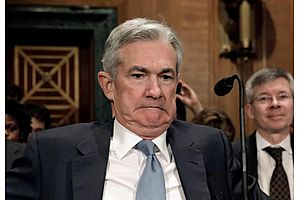In a matter of weeks, bond investors have seen some of their firmest market convictions swept away in a massive confluence of government stimulus and central bank intervention. Now, they’re being forced to rework their strategies for a new era.
Core tenets such as what constitutes a safe asset, the value of bonds as a portfolio hedge, and expectations for returns over the next decade are all being reconsidered as governments and central banks strive to avert a global depression.
Underlying much of the uncertainty is the risk that trillions of dollars in monetary and fiscal stimulus could create an eventual inflation shock that will trigger losses for bondholders.
“I’ve never, ever, ever seen anything like this before,” said Nader Naeimi, head of dynamic markets at AMP Capital Investors Ltd. in Sydney. “You have enormous buyers of debt meeting massive coordinated fiscal stimulus by governments across the globe. For bond investors, you’re caught between a rock and a hard place.”
While past quantitative easing programs have led to similar concerns, this emergency response is different because it’s playing out in weeks rather than months and limits on QE bond purchases have quickly been scrapped.
Federal Reserve Chairman Jerome Powell said Thursday the central bank will maintain its efforts “aggressively and forthrightly.” In an interview on NBC’s “Today” show, he said the Fed will not “run out of ammunition” after promising unlimited bond purchases. His comments came hours after the European Central Bank scrapped most of the bond-buying limits in its own program.
While this type of policy dominates markets, strategic thinking is stymied and some prized investment tools appear to be defunct, said Ronald van Steenweghen of Degroof Petercam Asset Management.
“Valuation models, correlation, mean reversion and other things we rely on fail in these circumstances,” said the Brussels-based money manager. “Liquidity is also very poor so it is difficult to be super-agile.”
Ordinarily, the prospect of a multi-trillion-dollar government spending surge globally ought to send borrowing costs soaring. But central bank purchases are now reshaping rates markets — emulating the Bank of Japan’s yield-curve control policy starting in 2016 — and quashing these latest volatility spikes.
Investors shouldn’t expect to see much more than moderately steep yield curves, since the Fed and its peers don’t want higher benchmark borrowing costs to undermine their stimulus, says Scott Thiel, fixed income strategist at BlackRock.
“That would be detrimental to financial conditions and to the ability for the stimulus to feed through to the economy,” Thiel said. “So the short answer is, it’s yield-curve control.”
Inflation Risk
Looking further out, money managers need to reassess another assumption that’s become widely held in recent years: that inflation is dead. Van Steenweghen says he’s interested in inflation-linked bonds, though timing a foray into that market is “tricky.”
Naeimi also said he expects that the coordination by central banks and governments will spike inflation at some stage. “It all adds to the volatility of holding bonds,” he said. But for the time being, he’s range-trading Australian bonds — buying when 10-year yields hit 1.5%, and selling at 0.6%.
Many market veterans agree that faster inflation may return in a recovery awash with stimulus that central banks and governments may find tough to withdraw. A reassessment of consumer-price expectations would be a major setback for expensive risk-free bonds, especially those with the longest maturities, which are most vulnerable to inflation eroding their value over time.
At the moment that’s hard to envisage, as the market sees the U.S. consumer price index climbing by barely 1% over the next decade. And similar predictions proved wrong when central banks piled into asset purchases after the last recession. Still, central bank balance sheets are set to explode further into uncharted territory.
“There’s tension in all of this,” said Hamish Pepper, fixed-income and currency strategist at Harbour Asset Management Ltd. in Wellington, New Zealand. “I don’t think it’s necessarily about waking up one morning realizing that bond yields should be 100 basis points higher from here — but you have to think about inflation at some point.”
Article originally appeared on Bloomberg










0 Comments